‘Persecuted Black and Brown People . . . for Fun’
Historic ’63 March Became Media Milestone
Futuro, Parent of ‘Latino USA,’ Implements Layoffs
Lawsuit Calls Gannett Biased Against White Men
Aaron Morrison Named AP’s Race, Ethnicity Editor
For Maui Journalists, Wildfire Crisis Is Personal
Time Runs Out for ‘Spanish-Language Fox News’
Why Wesley Lowery Still Lower-Cases ‘Black’
Keeping Up With Digital Tests D.C.’s Informer
Calif. Acts to Shore Up Diverse, Local Journalism
Boost in philanthropic spending for journalism; Erica P. Loewe; Don Lemon; Gregory Lee Jr.; website for New Jersey’s “magnificent mosaic”; Courtney Gousman; Telemundo’s Nicole Suarez and Octavio Pulido; fines for Brazil’s ex-president; Gabon’s refusal to accredit foreign reporters; danger in reporting on threats to the Amazon.
Homepage photo: Trump truck drivers pass as supporters protest outside the Fulton County Jail as Donald Trump plans to be booked on Thursday. Credit: Michael Blackshire/Atlanta Journal-Constitution)
Support Journal-ismsDonations are tax-deductible.
‘Persecuted Black and Brown People . . . for Fun’
After former president Donald J. Trump surrendered at Fulton County Jail, had his mug shot taken, and was booked on 13 state counts charging that he conspired to subvert the 2020 presidential election in Georgia, MSNBC commentators collectively did their post-booking analysis.
Joy Reid delivered a powerful perspective as a Black woman who was a teenager in New York in the 1980s, when Trump and Rudolph Giuliani ruled as tabloid figure and prosecutor, respectively.
“When I moved back to New York, one of the mug shots that [sits] with me, I mean, I still remember that he made five teenagers my age take a mug shot — that he wanted them not just to take a mug shot, he wanted them dead. And this was the Central Park Five case, the Exonerated Five. And they were my age.
“So as a teenager, living in New York, I’ve said this before, because the reason I never watched ‘The Apprentice,’ I despised Donald Trump. Because he, to me, signified the rich white guy in Manhattan that absolutely hated and despised me. Hated and despised my cousins, my friends — everyone we knew. They called us ‘wilding,’ just because we were in the park. That said that we can’t be free to walk around in the street, that we were . . . when Patrick Dorismond got killed by an off-duty police officer, ‘he’s no choir boy,’ I mean he was no altar boy. He was literally an altar boy.
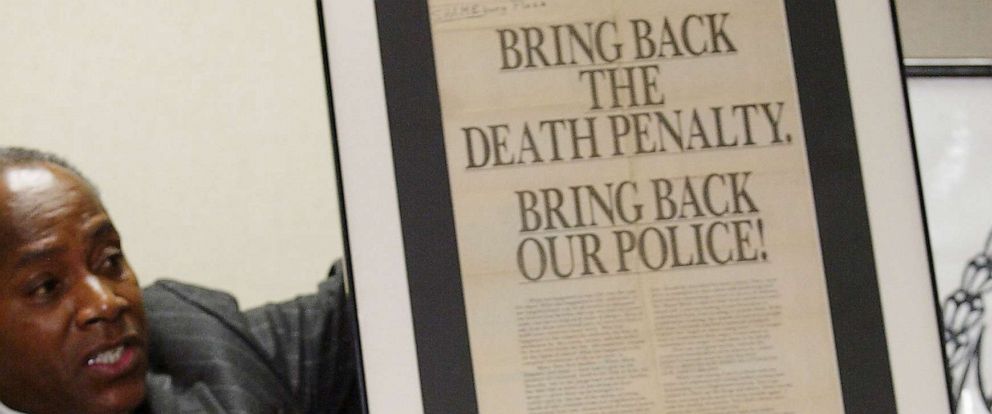 “Guiliani said that. And so people like Guiliani and people like Trump persecuted Black and brown people in New York. It’s what they did for fun. It’s what they did for pleasure. They enjoyed it. They enjoyed lording over people who had nothing, who had no million-dollar lawyers, who couldn’t change lawyers at the drop of a hat and get different hip-hop lawyer the next day, when they were tired of one, who couldn’t go out and make their case on Fox or on Newsmax, who had noth-ing, and who Donald Trump lorded his everything over, and still, people who looked like them, put him in rap songs. (Pictured: Trump’s 1989 ad, placed in four newspapers at a cost of $85,000, calling for the death penalty for the Central Park Five, now the Exonerated Five.)
“Guiliani said that. And so people like Guiliani and people like Trump persecuted Black and brown people in New York. It’s what they did for fun. It’s what they did for pleasure. They enjoyed it. They enjoyed lording over people who had nothing, who had no million-dollar lawyers, who couldn’t change lawyers at the drop of a hat and get different hip-hop lawyer the next day, when they were tired of one, who couldn’t go out and make their case on Fox or on Newsmax, who had noth-ing, and who Donald Trump lorded his everything over, and still, people who looked like them, put him in rap songs. (Pictured: Trump’s 1989 ad, placed in four newspapers at a cost of $85,000, calling for the death penalty for the Central Park Five, now the Exonerated Five.)
“It was an indignity to me that something I loved, a culture I loved, would lionize that. And so to me, this is justice. The fact that Manhattan didn’t give him a mug shot, I thought was offensive. And the feds said, ‘We already know what he looks like, he was the president of the United States.’ OK, offensive. Everyone else had to take them. This case, and I think [Fulton County prosecutor] Fani Willis is a hero, she is a national hero — because she, more than any other prosecutor in this country — and I respect [special prosecutor] Jack Smith and I respect all the prosecutors doing this — she’s the only one who said these wealthy, powerful, privileged men and women are just American citizens, and when they break the law, they will take that picture.”
- Updating: Charlotte Klein, Vanity Fair: MSNBC Is Having Its Super Bowl With Donald Trump’s Indictments (Aug. 28)
- Zeeshan Aleem, MSNBC: Ramaswamy’s ‘identity crisis’ rant was a disturbing pean to right-wing authoritarianism
- Atlanta Journal-Constitution, newsletter: “The State of Georgia v. Donald Trump”
- Charles M. Blow, New York Times: It’s Clear That Ron DeSantis Is No Longer on the Rise, but Someone Else Is
- Yarimar Bonilla, New York Times: Enrique Tarrio and the Curious Case of the Latino White Supremacist
- Jamelle Bouie, New York Times: The Irony in the ‘Rich Men North of Richmond’
- Hayes Brown, MSNBC: The deep irony of Sidney Powell’s criminal charges in Georgia
- Will Bunch, Philadelphia Inquirer: Journalism fails miserably at explaining what is really happening to America
- Marc Caputo, Amie Parnes and Dan Merica, The Messenger: Black Voters Saved Biden in 2020. Democrats Now See a ‘Red Flag’ in Slipping Support
- Jonathan J. Cooper, Associated Press: One image, one face, one American moment: The Donald Trump mug shot
- Renée Graham, Boston Globe: The Trump indictments are good for America and democracy
- LZ Granderson, Los Angeles Times: Biden’s job now is to remind voters how well he’s done his job
- Suzette Hackney, USA Today:’ Reawakened to the American dream’: Yusef Salaam on his path to New York City council (July 6)
- Solomon Jones, Philadelphia Inquirer: Fani Willis is doing her job. For Black women in America, that’s enough to earn them scorn.
- Maya King and Shane Goldmacher, New York Times: For Tim Scott, the Debate Was the Moment That Wasn’t
- Jeffery C. Mays, New York Times: Trump’s Arrest Lifts Campaign of Man He Once Condemned (April 6)
- Eugene Robinson, Washington Post: Trump’s aggrieved victimhood is a recipe for carnage
- Ericka D. Smith, Los Angeles Times: Black people presiding over the downfall of Donald Trump is poetic justice
- Ericka D. Smith, Los Angeles Times: This is how to beat DeSantis in the endless, racist culture war over Black history (Aug. 7)
- Kimberly Atkins Stohr, Boston Globe: After the Trump indictments, where are our lawmakers? (Aug. 16)
- Kimberly Atkins Stohr, Boston Globe: The Constitution won’t save us from Donald Trump
- ThyBlackMan.com: With His Latest Blunder Republican Vivek Ramaswamy has Disqualified Himself from Being President.
- Brandon Tensley, Capital B: What Black Americans Need to Know About the 2024 GOP Presidential Candidates
- Yvette Walker, Kansas City Star: Ramaswamy hit a nerve on Americans’ declining faith at GOP debate
- Jessica Washington, The Root: Why Is The Only Trump Defendant Sitting in Jail — Black?
- Eamon Whalen, Mother Jones: Trump’s Arrest Is a Reminder Mugshots Are Bad
Despite fears of violence, CBS’ Roger Mudd wrote in his 2008 memoir, “The Place to Me: Washington, CBS and the Glory Days of Television News,” “what happened was almost nothing. The march was a magnificently peaceful display of discipline, genuine love of country, and grit. It changed the face of the civil rights movement from one of isolated acts of violence and defiance into an indefatigable, determined, and respectable movement that gave notice to President Kennedy and the Congress that they had to deal with the issue.” (Credit: YouTube)
Historic ’63 March Became Media Milestone
Coverage of the original March on Washington on Aug. 28, 1963 — 60 years ago, as we were reminded this weekend — marked something of a milestone for television coverage of live events and of the civil rights movement.
“In ‘The Race Beat,’ their history of the media’s coverage of the civil rights movement, Gene Roberts and Hank Klibanoff tally up the relatively vast amount of resources that newspapers and radio stations and television networks devoted to the march,” Jack Mirkinson recalled for HuffPost in 2013, updated in 2017.
“There were, they write, around 3,100 police or press passes given to journalists on the scene. The big three television networks, together with the Mutual Broadcasting radio service, sent 460 people to capture video and audio. NBC aired eleven special reports throughout the day. CBS ran the whole thing all the way through. It was broadcast live to six countries.”
Aniko Bodroghkozy, then an associate professor at the University of Virginia, devoted a chapter to coverage of the march in his 2012 book “Equal Time: Television and the Civil Rights Movement.“
“In the summer of 1963 on network television news, at least on NBC, black protesters of racial segregation found themselves repeatedly juxtaposed to violence, disorder, turmoil and the need for law enforcement,” Bodroghkozy wrote.
But when the march ended without violence and with coverage that stressed the theme of “Black and white together,” the networks won praise from such quarters as the Pittsburgh Courier, part of the Black Press.
“And lest we forget . . . a BIG BOW in the direction of the radio and television industry,” the Courier editorialized. “Theirs was truly a job for the ages. Knowing that the eyes of the civilized world were on them, they gave the entire day a dignity in keeping with the serious solemnity of the affair itself.
“They could have ‘panned’ shots which could have been embarrassing to the people who conceived the March … and to the nation itself. But time and again they pin-pointed the raw drama the stark reality of the affair. They showed Dr. [Martin Luther] King [Jr.] in the forefront, with the statue of Abraham Lincoln in the background.
“They ‘caught’ in all its magnificence the intense and poignant expressions of those for whom the March meant so much. They could have done otherwise . . . but didn’t.
“America and the American Negro was projected in a light which will forever remain as a credit to our country.”
Bodroghkozy added, “The editorial displayed a significant sensitivity to the question of Negro representation, a concern that manifested itself over and over again among African American viewers and commentators during the civil rights era. Implicit in the editorial is a general distrust of the media in portraying African Americans with dignity and seriousness. . . .”
- Timothy Bella, Washington Post: At 92, MLK’s speechwriter confronts a new ‘insane’ moment in U.S. history
- Jamelle Bouie, New York Times: What A. Philip Randolph Knew About Jobs and Freedom (Jan. 21)
- Carole Blair, Frank Bond, Nancy Kidd, Richard Prince, Catherine R. Squires, Kirt H. Wilson, Gene Policinski, C-SPAN: “Media, Memory, and the March on Washington: How We Teach and What We Learn about the Speech that Changed America” (video) (July 29, 2013)
- Curtis Bunn, NBC News: 60th March on Washington event merges Black America’s current concerns with history
- Hamil R. Harris, Washington Informer: D.C. Churches the Bedrock for MLK, the Civil Rights Movement
- Kiley Hurst, Pew Research Center: Americans are divided on whether society overlooks racial discrimination or sees it where it doesn’t exist
- Roy S. Johnson, al.com: Black and gay, Bayard Rustin was a dual target yet essential to civil rights movement
- Peniel E. Joseph, Boston Globe: NAACP must embrace the legacy of ‘abolition democracy’ (July 26)
- Journal-isms: The Day CBS Forgot That King Was a Preacher (scroll down) (March 10, 2021)
- Mike Krings, KU News Service, University of Kansas: New book details social justice, activism in American journalism history (April 24)
- Aaron Morrison and Ayanna Alexander, Associated Press: Thousands converge on National Mall to mark the March on Washington’s 60th anniversary
- Donna M. Owens, NBC News: The March on Washington’s core ideas resonate 60 years later
- Ellie Silverman, Washington Post: The 2023 March on Washington is Saturday. Here’s what to know.
- Alecia Taylor, Howard University News Service: Students Make Voices Heard at 60th Anniversary of March on Washington
- Robin Washington, the Forward: Clarence Jones helped MLK write speeches. He’s still fighting for Blacks — and Jews
- Washington Post: The unfinished work of the March on Washington (podcast)
- Clarence Williams and Washington Post Staff, Washington Post: An oral history of the March on Washington, 60 years after MLK’s dream
- Jessica Xiao, AsAmNews: AAPIs show solidarity at 60th Anniversary of March on Washington

Futuro, Parent of ‘Latino USA,’ Implements Layoffs
Futuro Media, the nonprofit news organization founded in 2010 by Pulitzer Prize winner Maria Hinojosa best known for the public radio show “Latino USA,” announced Thursday that “we have taken action to scale down our organization.”
The company did not disclose the exact number of layoffs, but some who were targeted announced the news themselves on social media. Editorial director Fernanda Santos tweeted that she resigned because “Too many people were laid off and I couldn’t in good conscience stay while seeing them gone. I stand in solidarity with them and remain committed to helping them on the road ahead.”
Hinojosa, who had been traveling on safari in Africa, wrote Friday on social media, “What this horror feels like. Like getting your chest bones broken on a daily basis. Like your heart being ripped out of your body. [Losing] limbs slowly and every day. Continuous tears. Shock. More weeping. Anger. Deep shit I can’t talk about. Then. Hope. Nature. Mi famiila.
“My colleagues fighting for us to stay alive. Their love and selflessness feeds my broken heart. And then I am like: I am a boxer. I know abt being hit. Knocked DOWN. But Futuro will rise again. Hard at work now on OPERACION: Futuro FENIX. Operation: Phoenix Futuro de Nuevo. We will RISE. Because NO TE VAYAS. Because NO NOS VAMOS. I love you all for loving our little bebe Futuro Media.”
 On her own site, Santos (pictured) listed some of her accomplishments, including that “I developed and supervised a plan for the year-long series of shows commemorating the 30 years of Latino USA and secured a partnership with the Benson Latin American Collection at the University of Texas at Austin, guaranteeing the company’s access to archival audio free of cost.”
On her own site, Santos (pictured) listed some of her accomplishments, including that “I developed and supervised a plan for the year-long series of shows commemorating the 30 years of Latino USA and secured a partnership with the Benson Latin American Collection at the University of Texas at Austin, guaranteeing the company’s access to archival audio free of cost.”
Although Hinojosa posted thoughts on social media, Marlon Bishop, Futuro Studio’s vice president of podcasts, said Hinojosa was not available to elaborate. “Right now Maria is focusing her energy on her team. She would absolutely be interested in talking to you in the Fall about our company and the state of audio journalism,” he told Journal-isms.
The staffs of Futuro Media and Boston-based PRX public broadcasting won the Pulitzer Prize for audio reporting in 2022 “For ‘Suave,’ a brutally honest and immersive profile of a man reentering society after serving more than 30 years in prison.”
- Angela Fu, Annie Aguiar, Tom Jones and Ren LaForme, Poynter Institute: Budget overestimates led The Texas Tribune to institute its first-ever layoffs — The nonprofit newsroom laid off 11 people Wednesday, including several longtime journalists and its entire copy desk.

Lawsuit Calls Gannett Biased Against White Men
“Gannett Co Inc . . ., the largest U.S. newspaper publisher, is facing a lawsuit claiming its efforts to diversify newsrooms led to discrimination against white workers,” Daniel Wiessner reported Tuesday for Reuters.
“The proposed class action was filed in Virginia federal court on Friday by five current and former Gannett employees who say they were fired or passed over for promotions to make room for less-qualified women and minorities.
“The plaintiffs say those decisions were driven by a policy announced in 2020 under which Gannett aims to have its newsrooms reflect the demographics of the communities they cover by 2025.
“Gannett has also tied executive bonuses and promotions to success meeting the goals outlined in the policy, according to the lawsuit.
“Gannett executed their reverse race discrimination policy with a callous indifference towards civil rights laws or the welfare of the workers, and prospective workers, whose lives would be upended by it,” the plaintiffs said in the lawsuit.
“Polly Grunfeld Sack, Virginia-based Gannett’s chief legal counsel, said the company always seeks to recruit and retain the most qualified workers.
” ‘We will vigorously defend our practice of ensuring equal opportunities for all our valued employees against this meritless lawsuit,’ Sack said in a statement.
“The lawsuit comes amid growing backlash to increasingly prevalent corporate diversity policies. Unlike other pending cases brought by conservative groups, the claims against Gannett were filed directly by the company’s employees.
“Starbucks Corp, Target Corp, and Progressive Insurance are among the companies that have faced shareholder lawsuits challenging diversity programs. A group founded by former Trump administration officials has filed more than a dozen complaints with a federal anti-bias agency accusing large companies of discriminating against white and male workers.
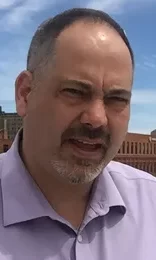 “Many experts expect an uptick in such challenges following a U.S. Supreme Court ruling in June that struck down race-conscious college admissions policies. On Tuesday, a group formed by conservative activist Edward Blum, who spearheaded the Supreme Court case, sued two major U.S. law firms over fellowships they offer to racial minorities and LGBT people.
“Many experts expect an uptick in such challenges following a U.S. Supreme Court ruling in June that struck down race-conscious college admissions policies. On Tuesday, a group formed by conservative activist Edward Blum, who spearheaded the Supreme Court case, sued two major U.S. law firms over fellowships they offer to racial minorities and LGBT people.
“In the lawsuit, plaintiff Steven Bradley (pictured, above) says he was fired from a management job at the Democrat and Chronicle newspaper in Rochester, New York, and then passed over for a different position with Gannett because he is white.
“Bradley in April filed a similar lawsuit against Gannett in New York state court.” On Aug. 18, Gannett filed a motion for “voluntary discontinuance,” a court employee told Journal-isms.
Aaron Morrison Named AP’s Race, Ethnicity Editor
 “Aaron Morrison (pictured) has been named AP’s new race and ethnicity news editor, taking over a team at the vanguard of the U.S. media’s coverage of race,” Sarah Rafi, the Associated Press’ deputy U.S. news director for reporting teams, announced Wednesday.
“Aaron Morrison (pictured) has been named AP’s new race and ethnicity news editor, taking over a team at the vanguard of the U.S. media’s coverage of race,” Sarah Rafi, the Associated Press’ deputy U.S. news director for reporting teams, announced Wednesday.
Rafi also said, “Aaron’s appointment is just the start of AP’s commitment to further building our coverage of race, both within the Race and Ethnicity team where job postings will be forthcoming, and throughout the company.”
Her announcement continued, “Aaron has for more than three years excelled as a national race and ethnicity writer based in New York, spearheading stories on the impact COVID-19 shutdowns had on prisoner rehabilitation programs, investigations into Black Lives Matter finances and coverage of how the pandemic amplified racial disparities, among many other topics. Before joining AP, Aaron was a reporter at The Appeal and Mic covering issues from mass incarceration to police use of force.
“Look no further than today’s rich, multi-format curtain raiser on the 60th anniversary of the March on Washington for the latest example of coverage conceived by Aaron and made possible thanks to the trust and cooperation he garners from sources and colleagues alike. . . .”
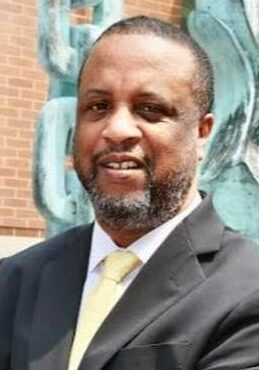 Andale Gross (pictured), the AP’s previous race and ethnicity editor, was named managing editor of the Kansas City Star in July.
Andale Gross (pictured), the AP’s previous race and ethnicity editor, was named managing editor of the Kansas City Star in July.
“When covering race, I would say what became even clearer to me was just how much race intersects with all that we cover as journalists,” Gross messaged Journal-isms on July 31, about to start his new assignment. “There are race stories to tell on health, politics, business, education, law enforcement and many other beats.
“That’s why it’s so important for news organizations to urge their reporters to not shy away from tackling stories about race and racism. And it shouldn’t just be journalists of color or the race coverage teams who are expected to do stories about race. It should be the responsibility of all the news gatherers.
“We’ve made progress as a news industry in covering race. But we have a lot more work to do. A lot of coverage is still done in reaction to racial incidents. More needs to be done on racial disparities and how inequality affects our daily lives. Coverage should also look more into the systemic racism that goes unchecked in numerous institutions from hospitals and schools to financial agencies and the military.”

For Maui Journalists, Wildfire Crisis Is Personal
“Journalists across the globe are following closely what is now considered the deadliest wildfire incident in the United States in over a century. But for journalists in Hawaii, the impact is much closer — and more personal,” Amaris Castillo reported Aug. 17 for the Poynter Institute. “Their teams are balancing coping with the tragedy and covering it.
“ ‘Maui is a renowned tropical paradise,’ said Jay April, president and CEO of Akakū Maui Community Media, a public access channel with a studio in Maui. ‘We like to brag “Maui nō ka “oi” – “Maui is the best” … We take care of each other. We have something called “ohana,” which is extended family. We really have always bonded together during crises like this. But no one could be prepared for what happened here. Fireballs came down the mountain and literally devastated Lahaina, the famous old whaling port.’ . . . ”
April “said it’s an unsteady environment right now, and Akakū has had to remain fluid as an organization. He added that some social media users have caused a lot of problems by spreading conspiracy theories. ‘I mean, I got a call yesterday saying they were Russian drones sending direct energy beams down to Lahaina. This was what caused this distrust,’ he said. ‘Social media is breeding all kinds of rumors and distrust of government and one another’. . . . “
- John Eggerton, Multichannel News: FCC: Maui Communications Restoration Continues
- Isa Farfan, NBC News: Maui’s Latino community contends with destruction, grief and immigration fears after fires
- Sakshi Venkatraman and Kimmy Yam, NBC: Wildfire decimates Lahaina, once the capital of the Hawaiian Kingdom (April 9, updated April 10)
- Kimmy Yam, NBC News: Why Hawaiian sovereignty has undeniable context for the Maui fires
Time Runs Out for ‘Spanish-Language Fox News’
Time ran out on Friday for Americano Media, a struggling company that styles itself as a version of Fox News in Spanish, as the deadline set by employees to keep working without pay at the Miami-based company came to an end, Antonio Maria Delgado reported Friday for the Miami Herald.
 “Its owner was able to reach a deal with a potential buyer keep operations going.
“Its owner was able to reach a deal with a potential buyer keep operations going.
“Efforts to sell the company to Texas-based Voz Media had proven unsuccessful by the end of business on Friday and most workers . . . who [have] been keeping radio operations on the air, even though they hadn’t been paid in months, said they had no intention of returning to work on Monday.
“A previous offer made by Voz Media last week — which would have taken over the company’s heavy debt burden along with a symbolic payment of $1 to the current owner — was considered to be so low by Americano Media owner Ivan Garcia-Hidalgo that he told the Miami Herald that he did not consider it to be a real effort to buy his company. . . .”
Why Wesley Lowery Still Lower-Cases ‘Black’
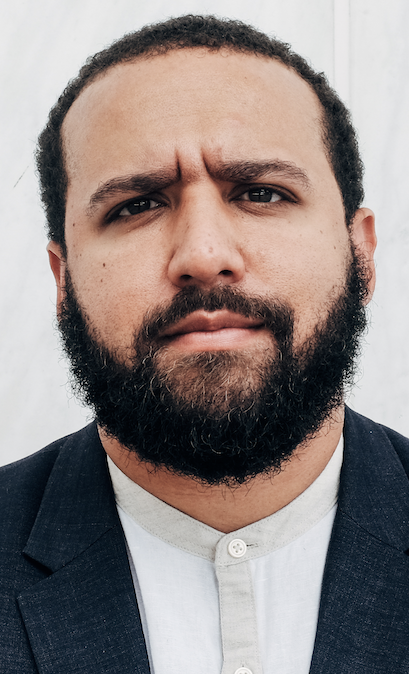 Wesley Lowery, who started July 1 at American University as an associate professor of investigative journalism and executive editor at its Investigative Reporting Workshop, explains in his new “American Whitelash: A Changing Nation and the Cost of Progress,” why he continues to lower-case “Black” when referring to people.
Wesley Lowery, who started July 1 at American University as an associate professor of investigative journalism and executive editor at its Investigative Reporting Workshop, explains in his new “American Whitelash: A Changing Nation and the Cost of Progress,” why he continues to lower-case “Black” when referring to people.
“In the pages of this book, I use the lowercase for black and white when used to describe racial groups,” writes Lowery, who is of mixed parentage.
“It is currently popular to capitalize the b in black, in acknowledgement of and in reverence for the history, experience, and culture of black Americans. But at this moment in our history — amid persuasive racial violence and destructive white grievance — I fear capitalization provides fodder for those who preach race as a biological reality, as opposed to a societal construction. While racism is deadly real, race itself is a fiction.”
‘Forever Changing’ Digital Tests D.C.’s Informer
“What keeps you up at night about the local media industry?” the Local Media Association asked Denise Rolark Barnes, publisher of The Washington Informer, named the association’s Sales and Marketing Innovator of the Year.
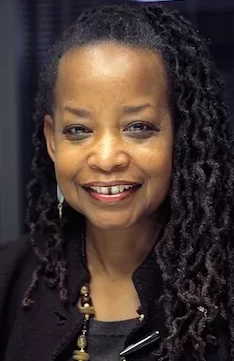 “The boogey-person that creeps into my thoughts at night is this thing called digital transformation,” Barnes (pictured) said Tuesday. “It’s been with us since the early 1990s, and for many of us in the local media, including The Washington Informer, it is a toss-up between a dream and a nightmare. Our print edition is still strong, and many of our readers still enjoy reading the printed paper.
“The boogey-person that creeps into my thoughts at night is this thing called digital transformation,” Barnes (pictured) said Tuesday. “It’s been with us since the early 1990s, and for many of us in the local media, including The Washington Informer, it is a toss-up between a dream and a nightmare. Our print edition is still strong, and many of our readers still enjoy reading the printed paper.
“But it is clear that our news resonates online, and there is no day we don’t spend learning how to become a better digital news provider. It’s not been easy, and while the digital revenue is growing, we have yet to grow enough revenue to support our operations.
“My nights are also restless because of my limited ability to manage a digital team. I can produce a newspaper with my eyes closed, but digital is forever changing, and it requires additional technical skills from digital professionals that are not easy to find. I’m optimistic, however, and excited when we try something new and succeed. The failures are lessons, and I spend some of those nights trying to understand what the lesson was.”
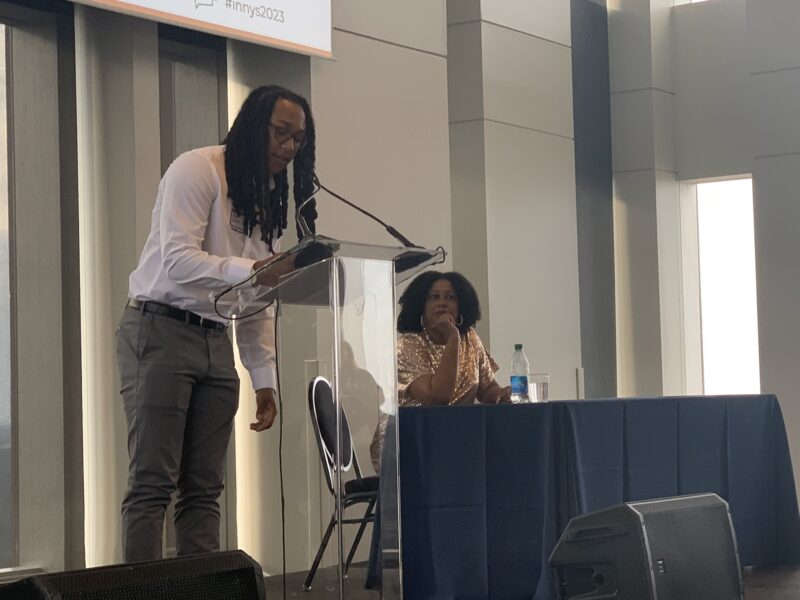
The association announced its selection of Barnes in May. Ryan Sorrell, founder and executive editor of The Kansas City Defender, was News, Content and Audience named “Digital Innovators of the Year” “for his leadership that has helped The Defender reach more than 50 million people and earn 60,000 social media followers since its launch in July of 2021.”
Judges said of Sorrell’s nomination: “Ryan’s unwavering commitment to delivering quality news to the Black community, particularly Gen Z, has made him a thought leader in the industry.” The award salutes his “exceptional leadership in digital journalism and his pioneering spirit.”
Sorrell and the Defender drew national attention last year when the upstart Black digital startup publicized what it later called the actions of “a white supremacist who believed we are in a ‘race war.’ ” Mainstream media went with the police dismissals of Black concerns that a serial killer was targeting Black women and girls.
- Kevin Loker, American Press Institute: Key findings for reaching Black Millennials and Gen Z with news (March 9)
- Online News Association: ONA announces winners in the 2023 Online Journalism Awards
Calif. Acts to Shore Up Diverse, Local Journalism
The University of California at Berkeley’s Graduate School of Journalism last week launched the nation’s largest state government-funded effort in the nation to shore up local journalism.
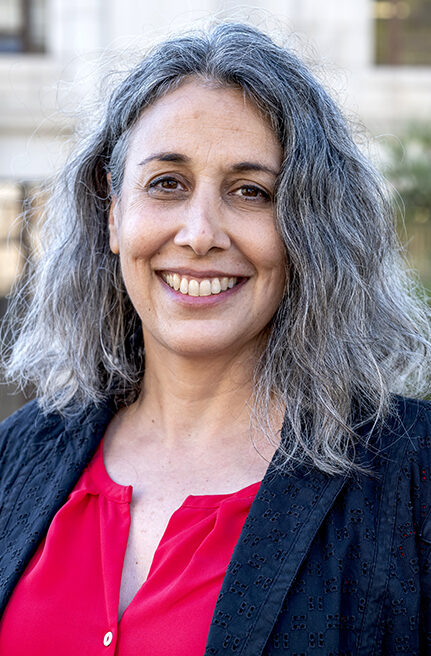 Buoyed by a $25 million state grant, the university announced that 39 journalists will be deployed to 37 news outlets throughout the state under the California Local News Fellowship program. Based on profiles posted on the Berkeley website, a significant number of Latino, Asian, and Black journalists were selected. . . .
Buoyed by a $25 million state grant, the university announced that 39 journalists will be deployed to 37 news outlets throughout the state under the California Local News Fellowship program. Based on profiles posted on the Berkeley website, a significant number of Latino, Asian, and Black journalists were selected. . . .
“This program will help strengthen local newsrooms of all kinds to better serve their audiences, telling the stories that matter,” Geeta Anand (pictured), the dean of the graduate journalism school, said in a statement.
Christa Scharfenberg, project director, said that boosting coverage of historically marginalized and underserved communities, and training journalists from those communities, is a key priority. She said 26 of the 37 participating outlets have 10 or fewer staff members, and four have between 11 and 20. Of the outlets, six serve Spanish-speaking communities, four serve Black communities, two serve Asian populations and one is for Slavic/Russian immigrants. . . .
The fellowship’s launch has been rooted in controversy over concerns it was not serious about its diversity promises.
In February, 19 publishers and editors of Black media outlets signed a letter to Anand, the Berkeley journalism dean, saying “we are deeply offended that Black newspapers were systematically excluded from providing meaningful input to the advisory board and shaping the California Local News Fellowship program.” After that letter became public, Regina Brown Wilson, executive director of California Black Media, one of the organizations listed on that letter, was added to the now 18-member board. The board includes several other Black and Latino journalists. Full story below. — Isaiah Jerome Lewis Poole
Short Takes
- “There has been a ‘substantial’ increase in philanthropic spending for journalism over the past five years, particularly outlets that serve poor and minority communities, a report issued on Thursday said — but journalists need to tighten ethical rules that govern the new spending, it recommended,” David Bauder reported for the Associated Press. “The struggling news industry is increasingly relying on donations and subscriptions, although it hasn’t come close to making up for the collapse in advertising that has led to the dramatic drop in outlets that cover local news. More than half of funders surveyed by NORC at the University of Chicago said they have increased their journalism grants. Most nonprofit and for-profit news organizations report more funding. . . .”
 Erica P. Loewe (pictured), White House director of African American media, is taking a new role in the Biden-Harris administration, April P. Ryan reported Thursday for theGrio. “Loewe, who managed part of the White House’s media and communications portfolio, will now serve as special assistant to the president and chief of staff for the White House Office of Public Engagement, theGrio exclusively reports. . . .” Lowe will report to Steve Benjamin, senior adviser to the president and OPE director. “Stay tuned for an update on who the next Director of African American Media will be,” Loewe messaged journalists on Saturday.
Erica P. Loewe (pictured), White House director of African American media, is taking a new role in the Biden-Harris administration, April P. Ryan reported Thursday for theGrio. “Loewe, who managed part of the White House’s media and communications portfolio, will now serve as special assistant to the president and chief of staff for the White House Office of Public Engagement, theGrio exclusively reports. . . .” Lowe will report to Steve Benjamin, senior adviser to the president and OPE director. “Stay tuned for an update on who the next Director of African American Media will be,” Loewe messaged journalists on Saturday.
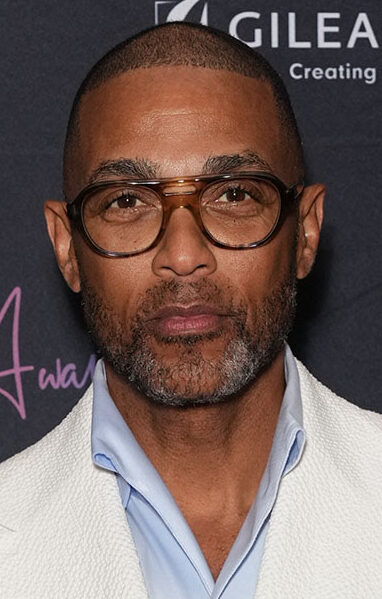 “In a conversation with Kara Swisher on her podcast Pivot, Don Lemon (pictured) opened up about feeling like CNN was getting ready to go in a different direction, and he didn’t fit that mold,” Christy Pina wrote Aug. 18 for the Hollywood Reporter. The former “CNN This Morning” co-anchor was let go in April, two months after making comments about how Nikki Haley was no longer in her prime. “He explained that he hasn’t watched the network since his departure, but that when he was there, he wasn’t a part of their strategy of wanting to be centrist, which he found surprising. ‘I think the news is the news, and you don’t choose a direction, it just is,’ he said. When asked about Chris Licht being let go shortly after the former CNN head ousted the co-anchor, Lemon said it speaks to what was happening before he was fired, adding that he feels ‘vindicated’ knowing that Licht is no longer running things. . . .”
“In a conversation with Kara Swisher on her podcast Pivot, Don Lemon (pictured) opened up about feeling like CNN was getting ready to go in a different direction, and he didn’t fit that mold,” Christy Pina wrote Aug. 18 for the Hollywood Reporter. The former “CNN This Morning” co-anchor was let go in April, two months after making comments about how Nikki Haley was no longer in her prime. “He explained that he hasn’t watched the network since his departure, but that when he was there, he wasn’t a part of their strategy of wanting to be centrist, which he found surprising. ‘I think the news is the news, and you don’t choose a direction, it just is,’ he said. When asked about Chris Licht being let go shortly after the former CNN head ousted the co-anchor, Lemon said it speaks to what was happening before he was fired, adding that he feels ‘vindicated’ knowing that Licht is no longer running things. . . .”
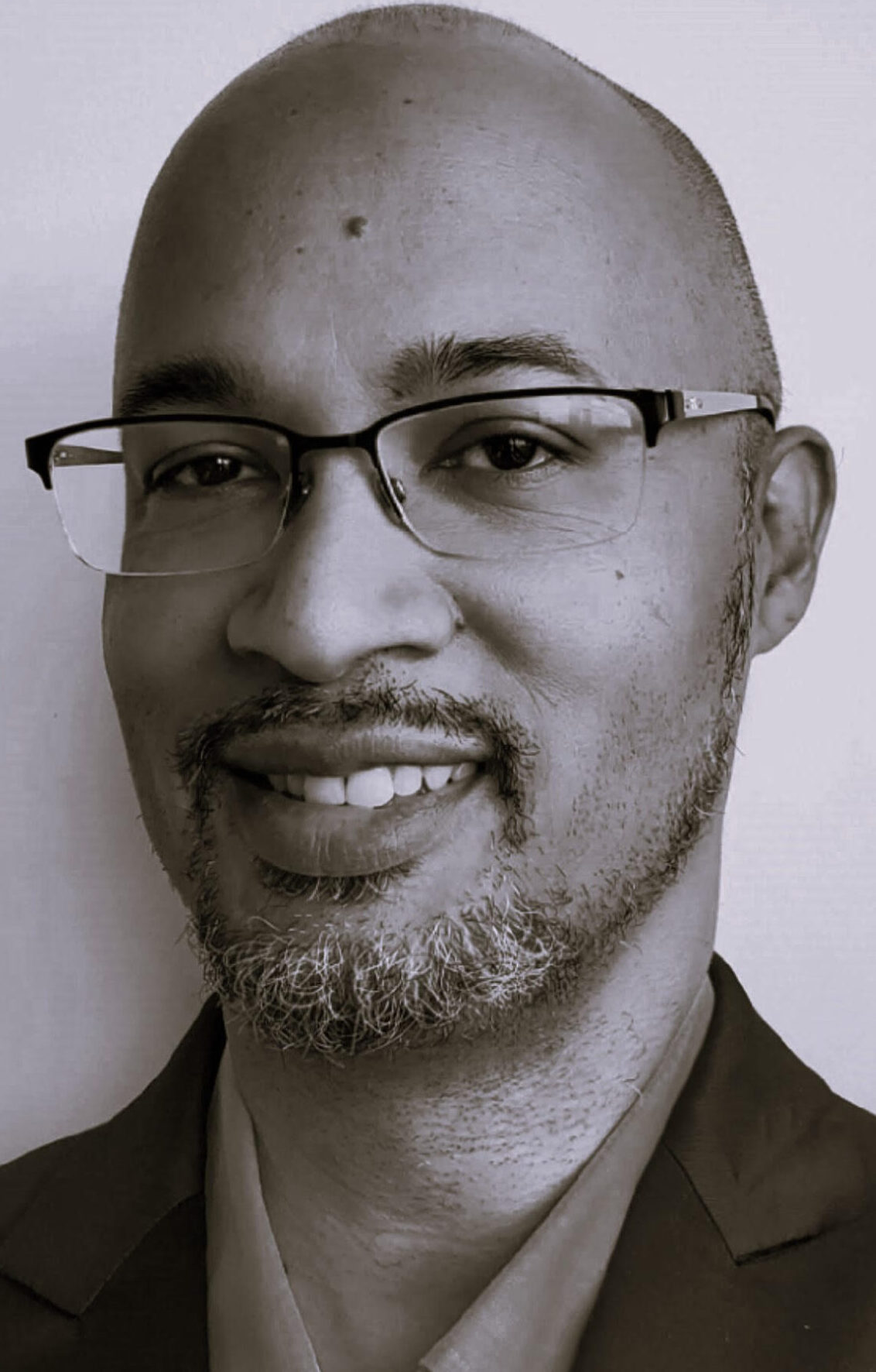 Gregory Lee Jr. (pictured) will become the 2023-2024 Marion M. and John S. Stokes Jr. Visiting Professor in Race and Culture in Media at Loyola University in New Orleans, Sheryl Kennedy Haydel, interim dean at the College of Music and Media, announced to faculty members. “He brings years of professional experience along with high energy and next-level expectations. He will teach Advanced Journalism and assist with advising [the National Association of Black Journalists chapter] this fall. In the spring, he will teach and plan a public panel,” Haydel wrote Aug. 8. Lee is senior news editor at Front Office Sports, where he says he will remain, based in his hometown of New Orleans. During his 30-year career, he has worked in various editing roles at the Times-Picayune, Washington Post, Boston Globe, South Florida Sun-Sentinel, NBA.com, and The Athletic. He has also been NABJ president and is a director and alum of the Sports Journalism Institute.
Gregory Lee Jr. (pictured) will become the 2023-2024 Marion M. and John S. Stokes Jr. Visiting Professor in Race and Culture in Media at Loyola University in New Orleans, Sheryl Kennedy Haydel, interim dean at the College of Music and Media, announced to faculty members. “He brings years of professional experience along with high energy and next-level expectations. He will teach Advanced Journalism and assist with advising [the National Association of Black Journalists chapter] this fall. In the spring, he will teach and plan a public panel,” Haydel wrote Aug. 8. Lee is senior news editor at Front Office Sports, where he says he will remain, based in his hometown of New Orleans. During his 30-year career, he has worked in various editing roles at the Times-Picayune, Washington Post, Boston Globe, South Florida Sun-Sentinel, NBA.com, and The Athletic. He has also been NABJ president and is a director and alum of the Sports Journalism Institute.
- NJ.com has unveiled a new website to “give readers news and information about communities of color, the LGBTQ community, veterans, people living with disabilities and others who contribute to our state’s magnificent mosaic,” Robin Wilson-Glover reported from New Jersey Wednesday, updated Thursday, for NJ Advance Media.
 “News 5 anchor Courtney Gousman (pictured) is no longer with the station,“ Joey Morona reported Monday for cleveland.com. “The television news personality made her last on-air appearance in late July. Last week, she confirmed to her followers on social media that she had been laid off ‘due to budgetary reasons and station restructuring.’ Indeed, WEWS parent E.W. Scripps Co. has been in the throes of a company-wide reorganization since February. Designed to eventually save $40 million annually, the effort calls for the elimination of 300 jobs over the course of the year, WCPO 9 News in Cincinnati reported at the time. . . .”
“News 5 anchor Courtney Gousman (pictured) is no longer with the station,“ Joey Morona reported Monday for cleveland.com. “The television news personality made her last on-air appearance in late July. Last week, she confirmed to her followers on social media that she had been laid off ‘due to budgetary reasons and station restructuring.’ Indeed, WEWS parent E.W. Scripps Co. has been in the throes of a company-wide reorganization since February. Designed to eventually save $40 million annually, the effort calls for the elimination of 300 jobs over the course of the year, WCPO 9 News in Cincinnati reported at the time. . . .”
- “Nicole Suarez and Octavio Pulido have been named anchors on Noticias Telemundo Mediodía, the network’s 12:30 p.m. newscast,” Michael Malone reported Aug. 16 for Broadcasting & Cable. The newscast was to debut Aug. 21, along with the anchor pair. “Mediodía will stream live on YouTube, Facebook and Twitter.”
- “The former president [of Brazil Jair Bolsonaro] was convicted by the 4th Chamber of Private Law of the São Paulo Court of Justice for 175 attacks against the press,” Intercept Brasil reported Aug. 18 via LatAm Journalism Review. “The public civil action was brought by the Union of Journalists of the State of São Paulo. The fine is R $50,000 [about US $10,000]. Bolsonaro can still appeal to higher courts. . . .”
- Reporters Without Borders condemned the Gabonese government’s refusal to issue any press accreditation to foreign reporters who wanted to cover the general elections, held Saturday. “The refusal is absurd and a violation of journalistic pluralism,” Sadibou Marong said Thursday for the press-freedom group said. All of the reporters for foreign media who wanted to travel to Gabon to cover these elections have been turned away. “The authorities have not agreed to any of the accreditation requests that they have received from foreign journalists in the past three weeks. They have told international media they are unable to accredit journalists coming to Gabon for these elections. A journalist who had been sent especially by the French news magazine Jeune Afrique was denied entry on the evening of 21 August. Having received no response to her request for press accreditation, she decided to fly to Gabon anyway. But she was refused entry on arrival and was put on a flight back to Paris the next morning. . . .”
 ” Manuel Calloquispe (pictured) has had to face an angry mob laying siege to his house,” John Otis reported Wednesday for the Committee to Protect Journalists. “He’s been called a traitor. He’s been punched and kicked by miners and had his equipment stolen. He once had to duck for cover when someone threw a machete at him. The reason: His decade reporting on the environmental havoc caused by the illegal extraction of gold from his childhood home in the Amazon rainforest in eastern Peru. . . . Journalists in Peru face a variety of threats, ranging from a rising number of criminal defamation lawsuits to attacks by police during anti-government protests. Reporting on environmental issues from the Amazon, which encompasses parts of Peru and several other South American countries, can be especially dangerous due to its remote location, the lack of law enforcement that allows criminal groups to thrive, and poor communications infrastructure. . . .”
” Manuel Calloquispe (pictured) has had to face an angry mob laying siege to his house,” John Otis reported Wednesday for the Committee to Protect Journalists. “He’s been called a traitor. He’s been punched and kicked by miners and had his equipment stolen. He once had to duck for cover when someone threw a machete at him. The reason: His decade reporting on the environmental havoc caused by the illegal extraction of gold from his childhood home in the Amazon rainforest in eastern Peru. . . . Journalists in Peru face a variety of threats, ranging from a rising number of criminal defamation lawsuits to attacks by police during anti-government protests. Reporting on environmental issues from the Amazon, which encompasses parts of Peru and several other South American countries, can be especially dangerous due to its remote location, the lack of law enforcement that allows criminal groups to thrive, and poor communications infrastructure. . . .”

Calif. Acts to Shore Up Diverse, Local Journalism
By Isaiah Jerome Lewis Poole
The University of California at Berkeley’s Graduate School of Journalism last week launched the nation’s largest state government-funded effort to shore up local journalism.
Buoyed by a $25 million state grant, the university announced that 39 journalists will be deployed to 37 news outlets throughout the state under the California Local News Fellowship program. Based on profiles posted on the Berkeley website, a significant number of Latino, Asian, and Black journalists were selected.
 “This program will help strengthen local newsrooms of all kinds to better serve their audiences, telling the stories that matter,” Geeta Anand (pictured), the dean of the graduate journalism school, said in a statement.
“This program will help strengthen local newsrooms of all kinds to better serve their audiences, telling the stories that matter,” Geeta Anand (pictured), the dean of the graduate journalism school, said in a statement.
The announcement came as a recent wave of layoffs and closures in California’s news industry continues to send shockwaves through the state, a microcosm of what is happening in the news industry nationwide.
So far this year, the Los Angeles Times has announced it was laying off 13 percent of its newsroom staff, or 74 staff members; the Santa Barbara News-Press, one of the state’s oldest newspapers, declared bankruptcy and closed in July; the San Diego Union-Tribune was sold by Los Angeles Times owner Patrick Soon-Shiong to Alden Global Capital, which immediately offered buyouts to staff and threatened layoffs if there were not enough takers; and LAist, a digital news site and radio station under the aegis of Southern California Public Radio, laid off 10 percent, or 21 members, of its staff.
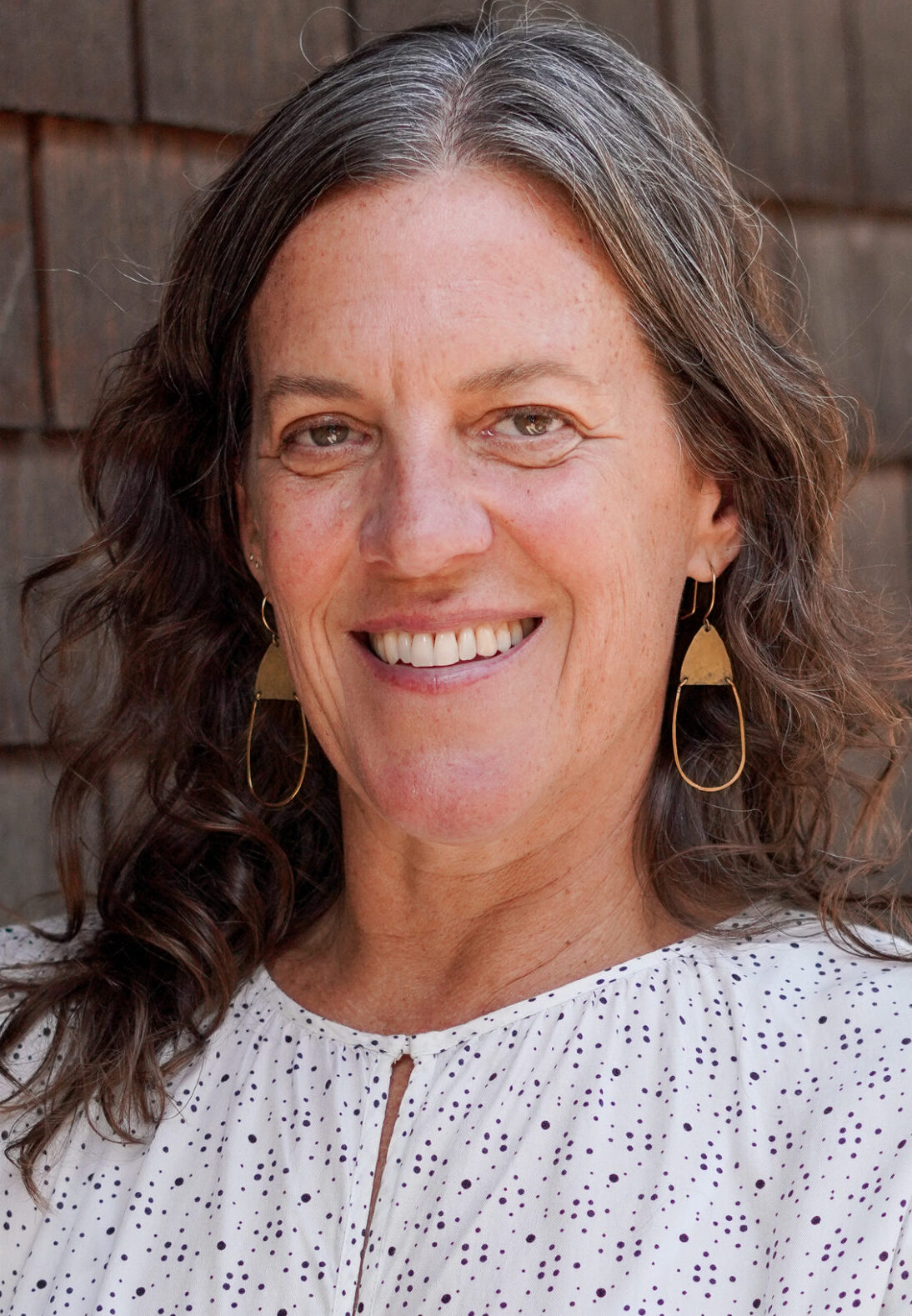 Christa Scharfenberg (pictured), project director, said that boosting coverage of historically marginalized and underserved communities, and training journalists from those communities, is a key priority. She said 26 of the 37 participating outlets have 10 or fewer staff members, and four have between 11 and 20. Of the outlets, six serve Spanish-speaking communities, four serve Black communities, two serve Asian populations and one is for Slavic/Russian immigrants.
Christa Scharfenberg (pictured), project director, said that boosting coverage of historically marginalized and underserved communities, and training journalists from those communities, is a key priority. She said 26 of the 37 participating outlets have 10 or fewer staff members, and four have between 11 and 20. Of the outlets, six serve Spanish-speaking communities, four serve Black communities, two serve Asian populations and one is for Slavic/Russian immigrants.
Also among the participating news outlets are the Los Angeles Times; the Bay Area News Group, which publishes daily papers serving San Jose, Oakland and the northern San Francisco suburbs; and the Orange County Register. Three public radio stations — KALW, KPBS and KVCR — are also participating.
“We wanted a breadth of opportunities for the fellows,” Scharfenberg said in response to a question about why the fellowship program included large news organizations owned by either corporate chains or wealthy entrepreneurs that had in recent years been shrinking the size of their newsrooms. She added that participating news organizations had to be specific about how their fellows would be deployed to address a critical gap in news coverage. For example, they could not use a fellow to replace a laid-off general assignment reporter.
The leverage to impose that stipulation on the news organizations exists because the fellows are employees of the University of California, not the newsrooms where they work, even though they will be directly supervised by editors at those workplaces. The fellows will earn about $60,000 plus benefits. Scharfenberg acknowledged that in many cases these fellows will be earning significantly more than their colleagues, but she said she hopes this will help raise salary and benefit standards for reporters throughout the industry and make journalism an attractive career choice.
The program will regularly meet with the fellows and support them with mentoring and oversight to ensure their work is in line with program goals, she said.
“We care very much that fellows themselves have an overall career-launching experience,” Scharfenberg added. One measure of that will be the number of fellows who stay in their newsrooms as full-time staff members after their fellowships end. “I hope we can point to the addition of a full-time reporter really making a difference in civic engagement,” she said.
 California State Sen. Steve Glazer (pictured), who represents a San Francisco-area district, said legislation that authorized the fellowship — California Assembly Bill 179 — was the result of an attempt to reconcile what the news industry in the United States has traditionally regarded as irreconcilable: government funding for journalism and journalistic independence from government. Aside from taxpayer funding for the Corporation for Public Broadcasting in this country and the BBC in the United Kingdom, “there aren’t too many models out there, and they’re certainly not comprehensive models of how you can support civic journalism,” Glazer said.
California State Sen. Steve Glazer (pictured), who represents a San Francisco-area district, said legislation that authorized the fellowship — California Assembly Bill 179 — was the result of an attempt to reconcile what the news industry in the United States has traditionally regarded as irreconcilable: government funding for journalism and journalistic independence from government. Aside from taxpayer funding for the Corporation for Public Broadcasting in this country and the BBC in the United Kingdom, “there aren’t too many models out there, and they’re certainly not comprehensive models of how you can support civic journalism,” Glazer said.
“It’s not easy to fulfill the twin goals of advancing civic journalism and maintaining the hands-off relationship of government,” he said. “I think we have found the right balance with the way this program has been funded and established. I’m hoping this will be an excellent example of how you thread that needle.
“I had to overcome a lot of skepticism,” he added. “But, you know, I made the choice that we had to do something, and I’m hoping, and I believe that it’s a constructive course. It may not be perfect, but it’s a very constructive course to helping the rich diversity of publications in our state that need help. Fingers crossed.”
In an email, Ben Trefny, interim executive director at KALW, called the fellowship program “a game-changer for journalism. It will bolster newsrooms around the state, and the greatest beneficiary will be Californians themselves. We were very happy to be selected as a host organization, and we plan to use our fellow to report primarily on emergency preparedness. This is a critical beat, especially considering the myriad ways in which California communities are vulnerable to issues including climate change, and being able to dedicate a full-time reporter is invaluable for our team. We’re excited to help our reporter grow into the beat, and we’re looking forward to producing outstanding stories that help the communities we serve better understand our world.”
Monique Harper-Desir, director of administration and development for Access Humboldt, said in an email that the fellowship is important to her organization because “we are not a traditional newsroom but we have implemented a solutions-based journalism program through our Redwoods Listening Post. We plan to use our fellow to create and disseminate local stories of interest Their role will be in the community to cover local news from the perspective of BIPOC and guarded communities, including health and wellness, current events, community resources and related news of interest to Black, Latinx, Asian, and local Tribal communities.”
The Access Humboldt fellow will have opportunities to work in print, radio and television, and will be working with “youth and adult resident (citizen) journalists to help them take their ideas and create stories and report on the news from their perspective and life experience.”
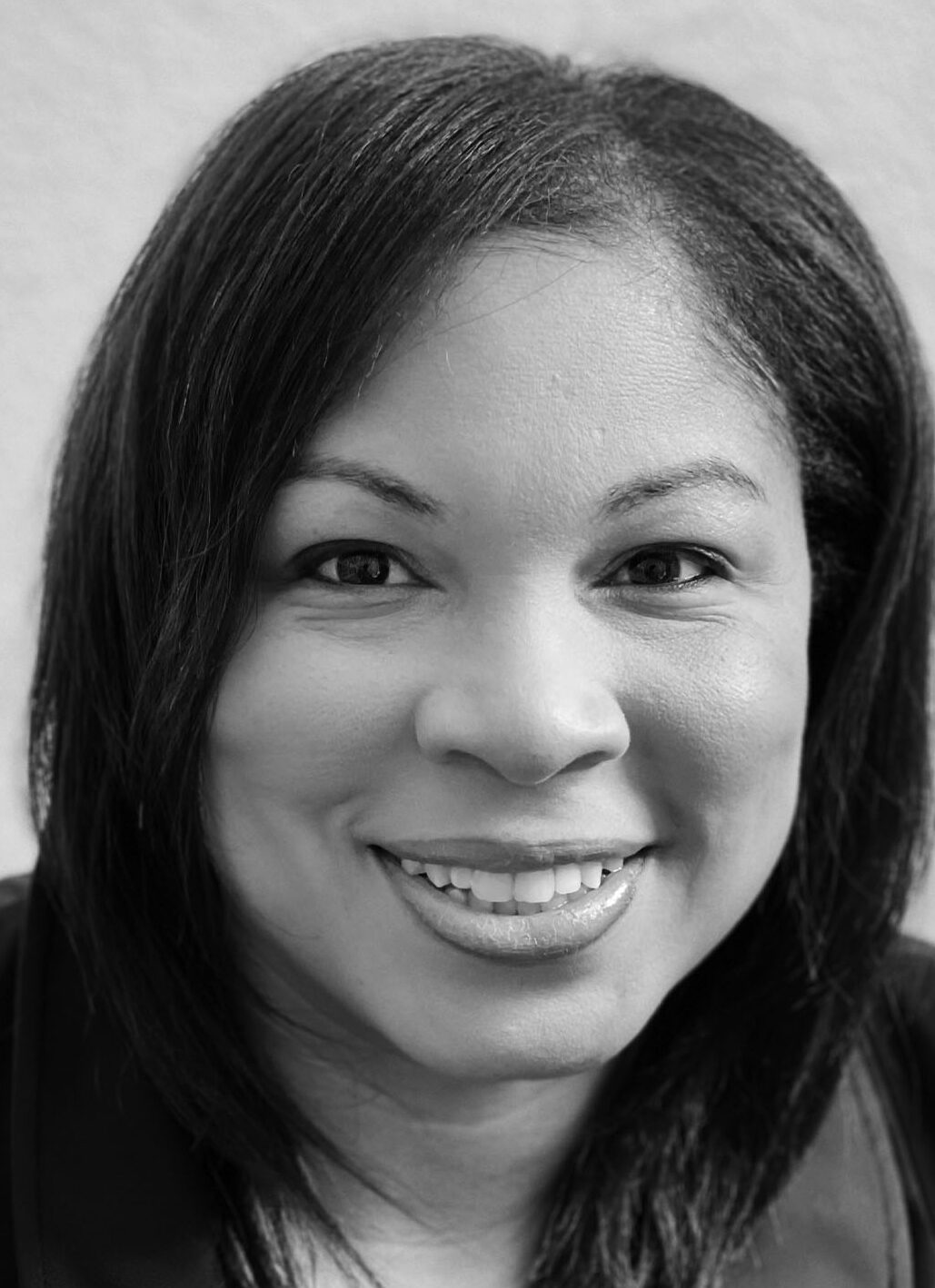 The fellowship’s launch has been rooted in controversy over concerns it was not serious about its diversity promises. In February, 19 publishers and editors of Black media outlets signed a letter to Anand, the Berkeley journalism dean, saying “we are deeply offended that Black newspapers were systematically excluded from providing meaningful input to the advisory board and shaping the California Local News Fellowship program.” After that letter became public, Regina Brown Wilson (pictured), executive director of California Black Media, one of the organizations listed on that letter, was added to the now 18-member board. The board includes several other Black and Latino journalists.
The fellowship’s launch has been rooted in controversy over concerns it was not serious about its diversity promises. In February, 19 publishers and editors of Black media outlets signed a letter to Anand, the Berkeley journalism dean, saying “we are deeply offended that Black newspapers were systematically excluded from providing meaningful input to the advisory board and shaping the California Local News Fellowship program.” After that letter became public, Regina Brown Wilson (pictured), executive director of California Black Media, one of the organizations listed on that letter, was added to the now 18-member board. The board includes several other Black and Latino journalists.
Nieman Reports noted this year that California is one of several states in various stages of enacting programs to support local journalism. The pioneering state in this endeavor is New Jersey, which passed the New Jersey Civic Information Bill in 2018. The New Jersey Civic Information Consortium is housed at Montclair State University and governed by a 16-member board of directors from six participating universities in the state.
This year the consortium awarded nearly $2.9 million in grants of up to $100,000 to 36 state organizations. The state of Washington has funded the Murrow News Fellowship at Washington State University to the tune of $2.4 million over the next two years. With that funding, eight fellows will have two-year, full-time reporting positions in state-based newsrooms beginning in early 2024.
In New Mexico, the state legislature in May appropriated $125,000 to the Local News Fellowships and Internships program run by the New Mexico Local News Fund and the Department of Communication and Journalism at the University of New Mexico. The appropriation augments funding the program already receives from several foundations, including Knight, Scripps Howard and the Solutions Journalism Network.
An attempt in Oregon to move legislation that would fund journalism fellows with state dollars did not succeed. But in Massachusetts and Illinois, legislators have passed bills creating commissions to study ways to fix their news deserts, according to Nieman Reports. Nieman also cites New York and Chicago as cities that have deliberately steered city advertising dollars to struggling news outlets.
To subscribe at no cost, please send an email to journal-isms+subscribe@groups.io and say who you are.
Facebook users: “Like” “Richard Prince’s Journal-isms” on Facebook.
Follow Richard Prince on Twitter @princeeditor
Richard Prince’s Journal-isms originates from Washington. It began in print before most of us knew what the internet was, and it would like to be referred to as a “column.” Any views expressed in the column are those of the person or organization quoted and not those of any other entity. Send tips, comments and concerns to Richard Prince at journal-isms+owner@
View previous columns (after Feb. 13, 2016).
View previous columns (before Feb. 13, 2016)
- Diversity’s Greatest Hits, 2018 (Jan. 4, 2019)
- Book Notes: Is Taking a Knee Really All That? (Dec. 20, 2018)
- Book Notes: Challenging ’45’ and Proudly Telling the Story (Dec. 18, 2018)
- Book Notes: Get Down With the Legends! (Dec. 11, 2018)
- Journalist Richard Prince w/Joe Madison (Sirius XM, April 18, 2018) (podcast)
- Richard Prince (journalist) (Wikipedia entry)
- February 2018 Podcast: Richard “Dick” Prince on the need for newsroom diversity (Gabriel Greschler, Student Press Law Center, Feb. 26, 2018)
- Diversity’s Greatest Hits, 2017 — Where Will They Take Us in the Year Ahead?
- Book Notes: Best Sellers, Uncovered Treasures, Overlooked History (Dec. 19, 2017)
- An advocate for diversity in the media is still pressing for representation, (Courtland Milloy, Washington Post, Nov. 28, 2017)
- Morgan Global Journalism Review: Journal-isms Journeys On (Aug. 31, 2017)
- Diversity’s Greatest Hits, 2016
- Book Notes: 16 Writers Dish About ‘Chelle,’ the First Lady
- Book Notes: From Coretta to Barack, and in Search of the Godfather
- Journal-isms’ Richard Prince Wants Your Ideas (FishbowlDC, Feb. 26, 2016)
- “JOURNAL-ISMS” IS LATEST TO BEAR BRUNT OF INDUSTRY’S ECONOMIC WOES (Feb. 19, 2016)
- Richard Prince with Charlayne Hunter-Gault, “PBS NewsHour,” “What stagnant diversity means for America’s newsrooms” (Dec. 15, 2015)
- Book Notes: Journalists Follow Their Passions
- Book Notes: Journalists Who Rocked Their World
- Book Notes: Hands Up! Read This!
- Book Notes: New Cosby Bio Looks Like a Best-Seller
- Journo-diversity advocate turns attention to Ezra Klein project (Erik Wemple, Washington Post, March 5, 2014)

